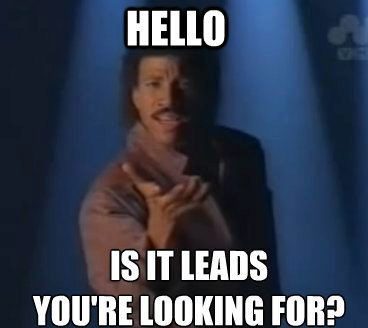Great article from MICHELLE KISS from Clicktime https://www.clicktime.com/blog/6-proven-ways-to-get-referrals-without-asking-for-them/

Referrals are from people you know, like and trust (klt) and who know like and trust you - join us at a bbg forum www.bbg.business
One major consequence of the internet has been the proliferation of choice, in all arenas. Remember when you walked into clothing stores and picked out what was on the shelf? How quaint. Looking for a new kind of toothpaste? Here are 75!
When it comes to material objects, figuring out what you need can usually be done through online reviews. For services, however, the currency is still the personal reference. Think about it: when you need a service, would you rather read 400 online reviews, then make your best guess, or would you rather hire a referral from someone you legitimately trust?
Even if you have a dedicated marketing team, if you’re a service agency, building a business still means generating referrals. For any other agency, good referrals are your best sales opportunities and are always worth getting. Here’s how.
1. Don’t Ask For Referrals — Your Clients Should Want To Give Them
Most advice about referrals comes down to “ask clients to refer you.” While this is sometimes appropriate, it can also put your clients in a difficult position. After all, if you’re asking a client to refer you, you’re asking them to put their own reputation on the line.
So instead of asking them to go to bat for you, teach your clients how to refer you. Make it clear in your materials that you rely on referrals. Don’t just say that you’re looking for new clients; ask your current clients for advice, to make them feel involved in your success. Remind clients of their colleagues, and ask if they have similar problems to the ones you’re currently solving.
The point isn’t to ask directly, it’s to subtly nudge.
2. Give Lots of Referrals
Simply doing good work means that your clients will think of you when someone asks them for a referral.
The problem? That’s not enough. Especially if you're trying to manage difficult clients. What you really want is for your clients to have you in the front of their mind, to be alert to opportunities, so that when then hear something related to you, you’ll automatically pop into their head.
How to do this? One way is to be someone who gives lots of referrals. To be the person your clients and friends know is looking out for them. This puts you all on the same team, and leads you to work for one another’s success. In this, referrals are like boomerangs: they always come back to you.
3. Focus on Newer Customers
Remember when you ate at that new, amazing restaurant nobody else knew about? Couldn’t you not wait to tell people about it?
When you’ve done work for a new client — solved a particularly difficult problem for them, or given them a service they’d never had before — you are that new restaurant. You’re the thing your clients can’t stop talking about. It’s these clients you can safely ask for referrals, since they’ll be excited to share.
Once you’ve worked with someone for a long time, you’re more like the regular Friday night restaurant: your customers still love you, but they’ve lost the urge to spread the gospel.
4. Thank Your Referrers (Preferably with Gifts)
You probably know this already, but a great way to make sure people keep referring you is to give them something nice. Buy them a gift certificate. Send a cake. Find out what their hobbies are, and give them a neat item that shows you’ve done your homework.
You don’t have to promise this in advance; in fact, this often works better when your gift is a surprise. This small expenditure works wonders: it shows your clients that you appreciate their referrals, and gives them an incentive to refer you again.
5. Know the Difference Between a Referral and a Lead
Sometimes when you ask for referrals, you’ll get a nice list of potential clients. The problem? That’s not a referral, it’s a set of leads.
The difference is important. A referral is a personal introduction that explicitly recommends you, and it takes care of the introductory salesmanship for you. A lead is just a name — you have to do the work to convince that person they should talk to you.
How to get referrals instead of leads? Here’s an idea: don’t ask client whom they know. Instead, ask them whom they like, or whom they’d recommend. Doing this immediately narrows down the list, ensuring that everyone on it is someone your client isn’t anxious about sending you to. Once you’ve done that, you can ask your client if they’d be willing to make a connection.
6. Create a (Legitimate) Product for Clients to Hand Out
If you’re looking for referrals, you can either ask your clients to pass your name along, or you can do that work yourself. How? By giving your clients something that’s actually useful to the people whom they’d refer you to.
By “something useful,” we mean something they can’t get anywhere else. Like a useful book people might not know about, with your name pasted to the inside. Or an info sheet you’ve put together. Or an authoritative guide to something you know about. Or a tool that not everybody has.
The key is this: instead of putting this thing on your website, give it to your clients, and give them more than they need. Instead of asking your clients for referrals, ask them if they’d be willing to put the thing somewhere where other clients can see it. This gets examples of your work in the hands of new potential clients, but without making your current clients uncomfortable.











